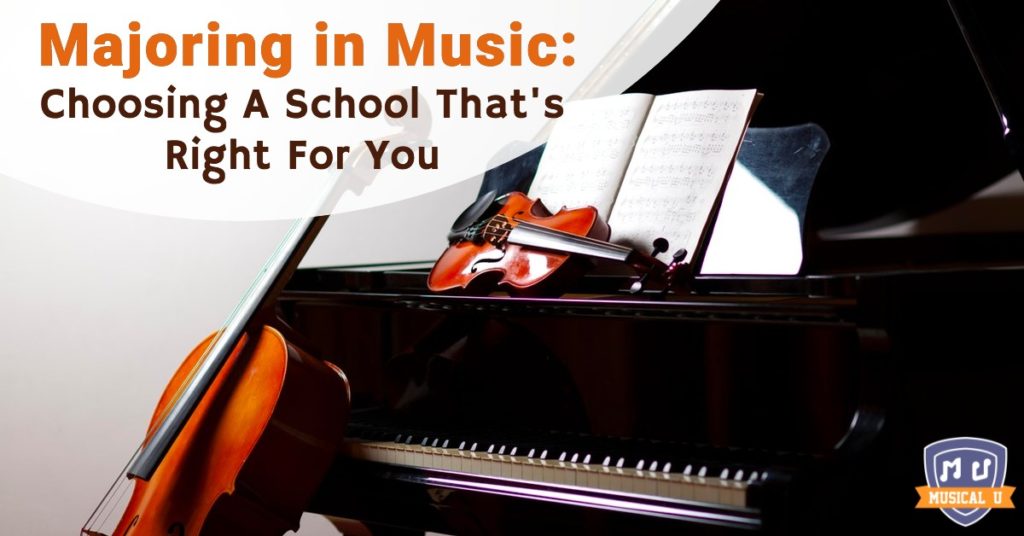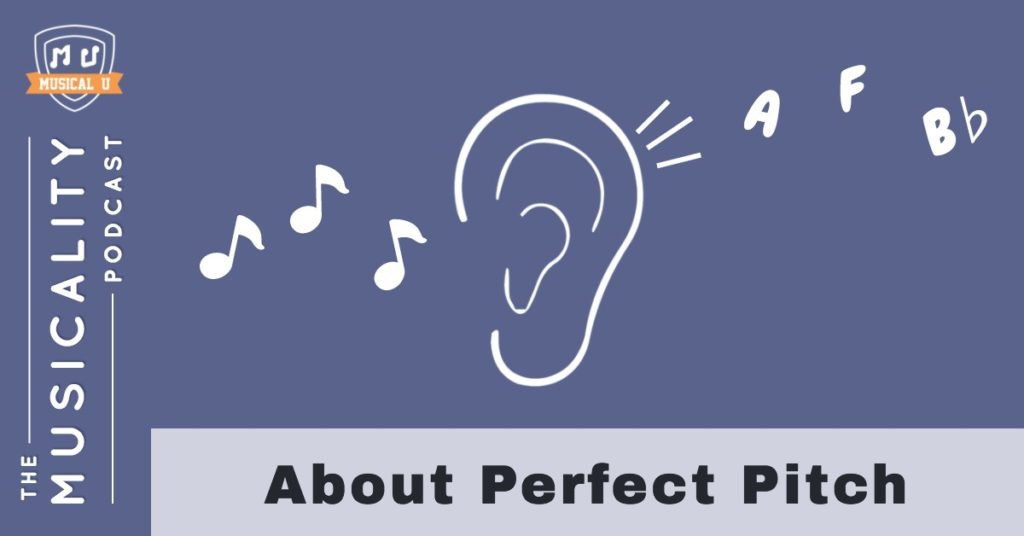Have you ever wondered if professional musicians have some special ability or received special teaching that helps them be creative, improve faster and be somehow immune to performance anxiety? It turns out there are “under the hood” techniques which any musician can use to gain these same abilities, and transform the experience of learning music into one of joy and ease.
Today on the podcast we’re joined by Gerald Klickstein, author of a ground-breaking book which is widely respected in the world of music education: The Musician’s Way.
Written as a handbook for the aspiring professional musician it’s packed with insights and strategies that can actually empower any musician. It tackles some of the most confusing and frustrating problems that musicians face, regardless of their instrument, musical style or career aspirations.
Topics like: how to design your practice to actually achieve results quickly and consistently. How to gain confidence to perform, even if it terrifies you. And how to nurture your creativity and collaborate well with other musicians.
The book reveals the hidden areas which professional musicians benefit from for learning, playing and performing – but which are generally left out of traditional instrument lessons.
Gerald has extensive experience as a teacher including on the faculty of several US universities – but the book isn’t based only on his own ideas and opinions. It’s evidence-based, meaning he’s drawing on a wide body of research and sharing what has been proven to work.
In this conversation Gerald shares:
- One unorthodox but incredibly valuable piece of advice on how to choose the exercises and pieces you work on.
- A simple but effective way for anybody to overcome performance anxiety using a practical process, as well as a really useful framework for thinking about what’s causing your anxiety when it arises.
- A great tip for anyone who’s wanted to record themselves playing but found it a really intimidating and stressful experience.
- Plus how the experts take full advantage of their “musical autopilot” – but without leaving themselves prone to performance freeze-ups due to relying on it.
If you’ve ever struggled to make your practice time deliver real results, or you’ve had any anxiety around performing music then you’re going to love this episode and how it opens your mind in new and useful ways.
Links and Resources
Enjoying The Musicality Podcast? Please support the show by rating and reviewing it!
Rate and Review!
Transcript
Christopher: Welcome to the show, Gerald. Thank you for joining us today.
Gerald: Thank you for having me. It’s a pleasure to be here.
Christopher: So, I’d love to start at the beginning, if we may, with a little bit about how you first learned music, and what that experience was like for you.
Gerald: I think like many people who ended up having a life in music, I started my musical journey as a child and I was always attracted to music. My parents were very musical, and at nine years old, I got my first guitar and I was fortunate to live near a place where I could take music lessons. So I could walk from my home, and five days a week after school, I had a 20-minute lesson, and I studied folk guitar and I sang and I played classical guitar, too. So I learned music reading and I learned playing by ear and improvising all at once.
Over time, I specialized more in classical guitar, and I ended up going to a music school for that. I earned a couple of degrees. At the same time, I was always fascinated by teaching and learning, so I had a strong interest in that and eventually took a position teaching at a university music school and kept refining what I was doing as an educator. And that led to me creating teaching materials and eventually creating the text, “The Musician’s Way,” which was published in 2009 by Oxford University Press and has had quite a presence around the world now in its 12th or 13th printing.
Christopher: It’s certainly a text that is referred to throughout the music education world and it’s had a huge impact. What was the opportunity or the lack you saw in the traditional music education model that brought you to write that book? Where did that inspiration come from?
Gerald: I would say that I was looking to fill a gap and I would say any author, any creative person, is not just expressing themselves, but they’re seeing something to contribute. And what I viewed is that much of the musical learning that was going on was ignoring the kind of things that go on under the hood. The internal kind of learning. And other things that were happening were very — say, if a student wanted to memorize effectively, or learn to perform confidently, they were all separated out, kind of siloed. And I was interested in a holistic type of learning that emphasized creativity, positive energy, accuracy, and competence all at once so that students would have a foundation that would allow them to grow in unlimited, diverse ways.
Christopher: And so, for our listeners who aren’t familiar with that term, can you just contrast what a holistic approach versus a non-holistic approach might look like?
Gerald: Sure. Great question. A holistic approach would take into account the person’s individual interests, the way they learn, the current research that tells us how music humans best learn, and bring in concepts of technical precision and artistic expression all at once while also considering healthy ways of playing or singing so we don’t incur injury, ways of learning about collaboration, and, particularly, introducing concepts of performance right at the beginning, so students learn in a way that they can feel confident and joyful about their music making and not feel like, “Well, I’m doing this now, and I’ll do that later.” Rather, we can do all these things at once in an interconnected way, provided that the material we work on is accessible to us and we don’t overwhelm our resources.
Christopher: That’s fascinating. I think a lot of what we do at Musical U is aiming at tackling the very limited way in which a lot of people learn music, you know, I think particularly if you are an adult amateur, you take lessons with a teacher and your worldview is kind of, “I will learn guitar,” or “I will learn piano,” and you think in terms of scales and repertoire and just getting the notes right, and often we find it’s really exciting and illuminating when people discover actually there’s this whole world of other things you can work on that kind of broaden your worldview as a musician. And what I love about your book is, it’s doing that same kind of thing in a very empowering way. It’s showing the individual learner, “If you want to be the kind of confident, creative, capable musician you’ve dreamt of, here are the areas you can work on, and here is what you can do in addition to that core instrument practice.”
Gerald: Certainly. And also, there are ways to practice that bring about the results we seek, and those results we seek are accurate, expressive, peaceful playing, singing and performing, and in The Musician’s Way, I cover these habits of excellence and strategies for organizing practice and if I were to pinpoint one thing that was the most important — you mentioned a lot of people that really focus. “I want to get the notes and then I can deal with other things later.” I focus on getting the expressive idea first, so that then, once we’re dealing with technical accuracy, we’re doing that in the context of saying something and making something meaningful. And I would say, if I were to point to one goof, one misstep that adults students make more often than any other misstep, it’s that they tackle things that are too technically challenging rather than starting with very accessible, attractive, high-quality music, and learning the holistic process of going from, “I don’t know how to play this, at all,” or “I don’t know how to sing this song, at all,” to where we’re then playing or singing confidently, joyfully, with no worries about anything going wrong.
That’s the process of where practice takes us. We start from this place of complete unfamiliarity and we get to the place of mastery, and with very accessible music we can learn that process again and again and refine it. And that is the path to musical success. It’s not taking maybe a great master work that we truly love and that is one of the pinnacles of our art form and working on that for months and months. That usually leads to all kinds of problems like tension that can produce injury, struggle that leads to anxiety.
Christopher: That’s so interesting and I love that you put the expressiveness first, because I think so many people, as you say, they just want to get the notes right, and afterwards they’ll worry about the dynamics or phrasing or making it sound musical. But I’m sure our listener is wondering, “How do you do that?” You know, if you sit down to practice a piece and you can’t yet nail every note, how do you start thinking about the musicality of it and the expressiveness?
Gerald: Sure. Well, in the text I actually describe that. And it depends on how you are learning. For example, if you’re a person who is not using printed music, you’re playing by ear, you would have certain strategies, and people who are using printed music might have some of the same strategies and some other ones. But I would say, it all starts with — especially if you’re not that advanced, you’re playing for fun — you’re just looking to have a kind of experience with music that’s soulful and genuine and you’re not too concerned about where it’s going. You’re just looking to have something meaningful in your life with music.
Then the best place to start is with an aural model — by listening. And then when you have an aural model you don’t want to copy it, you want to make it your own, so you might listen to several. And then the next step might be to figure out what is a — some structural elements. How would I section this off into digestible portions? And then within that digestible portion, to be able to say, “Okay, here’s a gesture that goes from here to here, and here’s another gesture that goes from there to there. And in those gestures, I hear these qualities.” Maybe they’re dynamic qualities, maybe they’re senses of rhythmic emphasis, and maybe they’re melodic qualities of connection, and then, to be listening for those as you then take on the task at a maybe slower tempo putting things together.
So if it’s a song and you’re a singer, maybe you would then start by — if you’re using printed music — start by counting the rhythm or saying the text in rhythm. That might be one strategy that works for one person. For another person, it might be, no, it’s better to just start with the melody and sing the melody without the text. Other people might find, “No, it’s better if I do all those things together, melody, text, rhythm.” And the idea is, whatever strategy works for you, starting with an aural model, with an idea of, what did you want it to sound like, and when you go in and you’re trying to solve technical problems.
Let’s take an instrumentalist and you’re a string player and you’re trying to shift or you’re trying to do something — string crossing — and it’s not coming out. Then when you zero in and you practice this little, few-note passage, you still are working on it with the context of how you want it so sound. This note’s stronger than that one, this note’s connected to that one, and you’re never separating the technical aspects from the expressive intent.
Christopher: That’s fascinating. And it’s such a different way of thinking about things, you know, to really start with that active listening and understanding the expressiveness in recordings or in your imagined version of your piece of music before thinking about key signatures and the particular time signature and rhythms in the sheet music. So many musicians do it exactly backwards, don’t they? They feel they need to play a basic rendition before they go and expose themselves to the amazing recordings that will inspire them to figure out the phrasing and dynamics.
Gerald: I would think, you know, for some people, that seems like, you know, that’s part of an eagerness. “Well, I really want to get started. What’s going on here?” And I would say it doesn’t take very long to — if you’re using a printed music, as you mentioned, a key signature one — to be looking at that score while you’re listening to something and then listening to a smaller portion. And I would say one of the challenges, too, for all learners is when you’re starting something and you have this aural model, your model in your head is going at full tempo. So if it’s a fast piece of music, your first action with it as a practicer is going to be at a slow tempo. So we have to be able to translate that full-tempo version down to something that’s slower — and that can give people trouble, too, where their first interaction with the music is at such a fast tempo they struggle.
So it’s very crucial to slow down, but, of course, that leads to some other issues where doing things slowly may involve physical actions that are somewhat different than the action of playing faster. So another master strategy of masterful practicers is to be able to practice slowly and infer what it will feel like faster so that the actions they do slow match the actions they will do faster. Not easy to do, and this is where having instructors is very helpful.
Christopher: Sure. So, you said something there that’s maybe quite surprising to our listeners, given that you are someone who is, you know, steeped in the traditional conservatory model. You’ve reached the highest echelons of that kind of training, but you said the way to great musicianship is to select pieces that aren’t ridiculously challenging, and I think a lot of our listeners would assume, you know, the great virtuosos they see performing on stage are always pushing themselves in terms of the technique and always going to the most complex music possible.
Gerald: Right.
Christopher: How much is that true? Is the approach you just described really focusing on the expressiveness first, something that is applied in that traditional music education system?
Gerald: It is with the finest teachers, I would say. But I think you bring up a great point. We want to push ourselves to advance in various ways, and so when we want to advance our technical skills, etudes and exercises are the place we can really push the envelope and be at the very front edge of our abilities. And that’s where we’re working on something like, scales, let’s say, to be able to play more in tune at certain registers.
If you’re a brass player, for example, you’ll find certain registers are easier for you than others, and you don’t want to be neglecting the registers that are hard for you. At the same time, when we’re learning music repertoire to share, to enjoy playing and to record, that is another kind of envelope, and there, people often view the challenges of making music as the challenge to do something quote-end-quote, harder, more virtuosic.
But the true place where musical artistry grows is when we’re able to master the technical challenges of just getting the pitches to be produced on our instrument, and what we’re doing is looking to create a really artistic work by shaping the music, by making it convincing, and by being able to do all of those things easily and authentically. That is the place where true musical art is made, and it’s not made by being on the outer edge of our technical abilities. What we want to do is push those technical abilities through exercises and etudes and then choose repertoire that — let’s say, if our technical ability — if you could quantify it, I’ll do it in a silly way, just on one to a hundred. If you could say your technical ability is right now at an 18, then your repertoire that you’d want to be choosing to perform would not, of course, be above that, but it would neither be close to that, either. It would be more like 12, might even be below, but the key thing is the repertoire is meaningful to the musician and high in quality so the person can play it, sing it for a long time, and incorporate it into their life, so they can build the repertoire and then over time have a large repertoire of high-quality, accessible music that they don’t have to practice much. Then they can get out and share it with people and not just have one piece they can perform and nothing else.
Christopher: I think that’s such a powerful piece of advice. I think that alone could transform the joy and success someone had in learning music just to select repertoire, not as a way to push your technical ability, but as a way to leverage the technical ability you’ve developed through exercises and etudes. That’s great advice.
Gerald: Well, thank you for that. To leverage that to make art, because I would say, you know, although we have various goals when we learn music I would say, ultimately we all want to share it. We want to share it with someone else, because we love it so much. We do that with music we hear. We hear a new artist and we’re really moved. We want to share it with a friend or a family member. So, to be able to share music, to create that artistic experience with someone else is the goal that pretty much everybody would have whether it’s overtly stated or felt inwardly, and the funny thing about that — or maybe not funny — the extraordinary thing about that kind of musical experience is when we make music together, we share music that we play or we listen, and we do that in a live setting. We have an experience that’s kind of like no other. We just — we no longer are male, female, old, young, from one ethnic group or another. We just experience the music and we become one together through that music. That is the loftiest goal of making music, to be able to do that, and that doesn’t involve how hard something is, it involves how beautiful and how fluent and how authentic it is.
Christopher: So, we talked a little bit there about how to bring out this artistic expressiveness and one aspect of that is to listen and get that aural model of what you’re aiming for. One thing that really jumped out at me in The Musician’s Way was, kind of, a solution to a problem I know a lot of our listeners will have faced, which is, a part from that kind of instinctive feel for how to make something musical, how can you actually sit down and think about what to think about, really, you know?
Gerald: Surely.
Christopher: When you sit down, what are the dimensions to think about, or the controls you have to make something sound more musical? And I love that you have in the book an “Essentials of Artistic Interpretation” list. Could you tell us a little bit about that?
Gerald: Sure. I talk about seven essentials, there, and your listeners can go and check those out and do you know, I have a companion website I run from the book with lots and lots of resources so they can get summaries of those things on the blog and find many other things. That’s MusiciansWay.com and a vast amount of free resources there. So, on those seven essentials, we don’t need to go through them all, here, but what I was looking to do was to parse the tools we have and point to them. So one of them I kind of mentioned earlier about understanding the mood and the style and what the tempo would be, and starting from that point, what is — it may seem obvious to somebody who’s working with an aural model. They’re not using music, they’re playing by ear.
But for someone who’s working from a score — making sure we know that — what’s the mood? What’s the style? What’s the tempo? So then, what the final tempo is. So then you slow it down, you’re still staying in that place where you feel that connection to the mood and the style. Other things we can — I’ve talked about — we can shape the dynamics, things like louder and softer and how. We can change tone colors. We can make things long, short, separate them. We can play with articulation and a few other things, there. But those also become things to listen for when we self-record, and I’m a big advocate of self-recording in which people can do very early in the learning process. So if, for example, someone’s challenged to keep things at a slow, steady tempo, they can record a portion, listen back and see. They’re okay if they’re slow, but is their tempo steady? Listen back to see, “Am I really shaping the phrase the way I want, or do I just think I am? So, self-recording gives us that ability to be objective and the essentials of interpretation give us tools to evaluate the way we’re being expressive and whether we think it’s effective.
Christopher: So maybe this is something to come back to shortly when we talk about performance anxiety and the kind of performer’s mind set, but I know a lot of people to whom we recommend recording themselves come back and tell us, “I’m too nervous,” or “I tried it, and I sounded terrible. I’m not going to do it again. ” What advice would you have for people who want to use this powerful tool of recording and self-assessment, but feel that kind of self-conscious, even when it’s only a recording device listening?
Gerald: Sure. Well, you know, the thing about recording is it’s kind of like — people can see it’s kind of like a judgment. They’re going to record, listen back, and then all of our self-critic negative traits can come out through that. And so I would go back again. Let’s make sure it’s something very simple and start with something that’s so simple it might seem like level you might not have played for years. Playing that or singing that just beautifully and doing a small excerpt and deciding what you’re going to listen back for, not to decide good/bad, but just to say, “How was my timing?” Just listen to the timing in a small excerpt. “How was the steadiness of my tempo? Oh, good.” I’m just listening for that, I’m not listening for some overall judgment quality. And then, over time, people will then feel more and more comfortable about recording larger segments and I would say, one thing I can share here is something I learned from Nelson Mandela. And I’ll paraphrase. He didn’t use these exact words, but, you know, he’s a hero of mine and many people, and he said, “I never fail. I either succeed, or learn.”
So, in the music education literature, there’s a thing called, “mastery orientation,” and this type of orientation is about looking to improve. And people who are seeking to improve at whatever they’re doing, whether it’s gardening, running, or playing music, if our goal is to keep improving our skills, such people have the lowest levels of anxiety, versus the type of people who are looking to compare themselves to others. Those people tend to have higher levels of anxiety.
Another researcher named Carol Dweck, that’s D-W-E-C-K, did a lot of research about mindsets and she found that people who have a growth mindset — this is a very similar kind of thing — who are always looking at mistakes and failures as opportunities to learn, they tend to have a different attitude and they tend to be more successful than people with fixed mindsets who feel that success is the result of some talent or inborn trait. What she’s shown is that — and you can — I wrote a blog about it called, “The Growth Mindset,” and she has a wonderful book by the same name — is that people can learn to have a growth mindset, that’s the main thing. And then for adult musicians or anyone looking to start a musical journey or to improve their music, it’s about a journey improving, finding the places where you need more improvement or less, and then exploring those things and getting on a path where you move forward. Sometimes you have some struggle and sometimes you don’t, but you see it all as part of this journey and we’re very fortunate people if we can be on that journey, because music is a glorious art form. Not many people get the privilege of making music, so I personally feel thankful every day — and I hope your listeners will be, too — that we are able to devote some of our lives to making music.
Christopher: Mm-hm. I can definitely see that taking that growth mindset and, you know, mistakes- are-just-opportunities-to-learn idea to recording yourself and self-assessment would totally transform the experience and the usefulness of it. That’s definitely something for our listeners to explore more and we’ll put a link to that blog post in the show notes for this episode.
Gerald: Thank you for that.
Christopher: I mentioned before, one thing I love about your book is that it equips people with mental frameworks for thinking about things, you know, these areas of music learning that are generally fuzzy and, you know, “I’ve either got it or I don’t,” or “I just need to put in the practice hours and I’ll eventually get there.” Your book really lays it out in a very clear and logical way and gives people strategies and tools they can use to develop in each of these areas. And one of those that is maybe the epitome of this is performance anxiety, as I mentioned before.
You have a whole section in the book about overcoming performance anxiety including how it manifests itself and how to tackle each of those issues. I’d love if we could just talk a little bit about that, because it’s such a challenge for a lot of our listeners and I think you’re one of the few people that doesn’t just offer a tip or two, but actually gives people a powerful way to think about it and to gradually improve their abilities there.
Gerald: Well, thank you for those kind words. I would say that your listeners should know too that the content of The Musician’s Way is evidence-based. I built it up, not just from personal experience, but from research on what we know about how people learn, what causes performance anxiety and how to overcome those things. So in there, I use the framework that I picked up from Glenn Wilson, who is a British psychologist who studies the psychology of performance, and it’s a fairly common framework used in that community of researchers, and that is, whether we’re going to be confident or whether we’re going to be nervous is built on three things, and those are the person involved, the task we have to do, and the situation in which we do it.
So for a person competing in the Olympics, the situation is very high-pressure compared to just, let’s say, shooting a — if they’re competing in archery — shooting at a target in the backyard, for fun. The situation’s very different, so if people wish to learn to perform, the initial situations they put themselves in should be very friendly, no pressure, and I’ll talk about how to do that in a minute.
And then when it comes to the task, the physical task should be simple if we’re to acquire the kinds of performance skills and mental skills, and not just physical playing skills that are involved in being successful and confident.
And then lastly, the person. We are all different. Some of us have backgrounds where we’re very extroverted, we love being around other people, and we’re, like, at our best around other people. Others of us are more introverted. We have very rich internal lives and we might feel less comfortable sharing overtly than some others. Some of us have other things about our backgrounds where we may have experienced great success performing. Others would have experienced lots of difficulties and challenges. So depending on one’s personal background and one’s personality, one would need to do certain things more or less.
So, the key to doing this is to understand what the performance skills are, which I talk about in the book, and which are built on how we practice, and then creating opportunities to practice those skills. And so that’s what I call, “practice performing,” and I outline three ways to do that, and one is in a simulated setting, just by ourselves. It might be for our recorder. It could be for the cat, whatever, and, but whatever the case may be, we set a certain time, let’s say, on a certain day, that we know at that time we’re going to warm up and maybe in our home studio, maybe we could turn our chair or stand in a different place in the room, face a different way to change, turn on the recorder and we know we’re going to go all the way from the beginning to end and we’re going to be thinking ahead, feeling ahead, sensing where we’re going, and we might perform at a slow, easy tempo. We might perform up to final tempo, whatever. And then we evaluate it. We practice skills doing that, and at that point, then we can do a performance development group, that is, we have another person or group of people. They could be friends that support us, family members, or they could be fellow musicians. We agree to that if we’re fellow musicians, we’re going to get together, say, once a month, in a safe environment and play or sing for each other, talking about what we’re trying to do, and I talk about how to form a group, how to comment on each other’s performance.
And then the third way to practice performing would be very low-pressure public settings. Open mics at a church, let’s say, where, if you’re a singer, you could sing a solo, let’s say, during communion, where people aren’t looking at you, you’re just getting used to singing all the way through. Other opportunities to perform might involve a family event. There are lots of opportunities, so I describe how to build that up so the situations start very friendly and gradually increase in the amount of exposure one might have and the amount of stress it might bring.
The key thing is that the task we take on, the repertoire we choose, must be very accessible, but also very beautiful to us, so we feel authentic performing.
Christopher: That’s such a constructive way to approach learning to perform, to treat it as something to be learned, not just the final test on what you have been learning, which is, I think, unfortunately how a lot of musicians experience it.
Gerald: I think what you’re pointing to is actually something of the infectious element, not a positive one, in some traditional music education. I actually point to it in the book that, commonly, a piano student might go to lessons and the teachers will work on score reading and hand position for months and months, and not give them any exposure of performance, whereas, a more performance-oriented teacher can have students perform, if they, say, take piano, for their very first lesson, because any child or adult can go into a lesson and learn a tune, let’s say, a four-measure tune that has three different notes and they can learn that by ear, and then with their teacher as the audience, they can perform the tune, starting from silence, being focused, playing all the way through, coming to the end with a nice closure, having some silence, and then the teacher applauding. They can learn how to direct themselves through performance from the very start.
If you play trumpet, it’s a little harder to make sounds, so it might take a little longer, but a person can still have that performance orientation, and therefore performance skills integrated from the start. When teachers don’t integrate those skills, they don’t just deprive a student of some education, they can actually instill anxiety because the student will feel like, “Well, I should be able to perform this, but I can’t. I get all jittery, I can’t think straight, my hands shake.” And the student will think, “Well, there must be something wrong with me, because everybody seems to think I should be able to perform.” But, almost invariably, with the exception of maybe a small percentage of people who have bigger personal issues with anxiety in general, almost everybody can learn to perform confidently.
It’s a matter of skills. It’s not talent. We all have certain levels of talent that may limit, let’s say, how fast we can run. We can’t all be Usain Bolt and we know that, and we all can’t, maybe play the hardest concierto for our instrument or the fastest bebop lick on the saxophone, let’s say. But we can all play music beautifully, authentically, and perform beautifully and authentically. That is a matter of acquiring skill and if we choose appropriate tasks we are pushing to the limit of whatever our — if we have a nervous system limit on the speed at which we can execute, we don’t approach that.
Christopher: So, taking a gradual approach with the task and the situation makes a lot of sense, and I can see how if you have that given to you, you have that opportunity to learn the performance skills from the outset, maybe the person aspect never really becomes an issue. For one of our listeners who is saying to themselves, “That’s great, but I just know I can’t perform,” do you have any examples you can give of people overcoming that feeling that they just don’t have what it takes, or they have a couple of experiences and now they’re sure they can’t do it?
Gerald: Well, that’s a great question. I can think of many. Let’s take one — you know, one thing to know is that manifestations of performance anxiety, like, the symptoms — are pretty conventional and standard across the board. People have different ones, but, you know, things like shaking and butterflies and confusion and crazy thoughts, although those manifestations are pretty standard. The causes of them for the individual person are very personal and distinct. We’re all very different. So, one person, for example, that I worked with had tremendous tremor. The person was a wonderful musician and had played music from a very young age. The parents were professional musicians. This person had a tremor. They would bring — I’m a guitarist, so I was teaching guitar, and the person would bring — under a performance situation, bring hands to the strings and then they would just start to shake and the tremor would be wide, so the person just really couldn’t play, under that circumstance.
And so, what we did is, in a performance development group, just did some very simple tasks where the task would be, “You are going to walk up on stage, bow, and then you’re going to bring your hands to the string and play one note with your thumb. Then you’re going to take your hand away, breathing, releasing the tension, lengthening your spine, bringing the hand to the string, play a couple of notes with your thumb and doing a few more things and a couple of chords. That’s it. You’re done.” And then the performance development group would meet twice a week and the person just started doing this and doing very simple tasks. Then it became a little more than just playing a few notes and a few chords. It would be an opening phrase. Long story short, that person’s a professional performer, now.
Christopher: Wow.
Gerald: The idea was, we can overcome all of these things, and I’m telling you, you may never — none of your listeners and very few musicians would have ever seen such a huge tremor.
Christopher: Hm.
Gerald: And it was totally, a person was able to overcome it. It was coming from some place that had been somehow vetted long ago, and that those impulses had to be replaced with new ones. And we were able to do that.
I can think of another situation where somebody really wanted to play from memory, but just felt like they could not play or sing from memory and this person took a more deliberate approach to memorization and could play lots of really elaborate things from music, but none from memory. So what we did is, we simplified, took some very simple things to memorize, and in kind of of a similar approach.
In a performance development group, the goal would be to play from memory this fifteen-second excerpt. You’re done. That’s it. Or, do it again, and then a few days later, do it again. The idea is that frequent exposure to pressure-free performance situations allowed the person to acclimate to performance situations and gradually have them seem less threatening, or whatever unconscious things were causing them to feel threatened.
So, those are just two examples, but the key thing I’m pointing to is what they call in the psychological world, “stress conditioning,” where the person actually puts themselves in the stressful situation, the thing that provokes the stress, and does it repeatedly so they — it’s no longer rare, it no longer feels as threatening or as odd. The key thing is to do it in small doses, frequently, and that’s where performance development groups become so helpful, and, let me say also, because we’re now in the 21st century, people can have performance development groups over the web. They don’t have to get together in person. The key thing is that everybody’s supportive of each other, and people actually verbalize what they’re working on. “I have a tremor,” or, “I tend to have trouble for memory, so I heard this podcast,” or, “I read something online,” or, “I read this book. It said I should try this, so would it be okay if I just try this? I just want to do this fifteen-second excerpt from memory and feel myself go through it, or a thirty-second excerpt and then I want to finish it, think about how it goes, and I want to do it again. ” And that’s your job, that’s your goal for the performance development group.
Of course your friends or your fellow musicians will support you, because when we hide these issues or we think, “Oh, my God, if I say I have a tremor or that my memory’s bad, then it says there’s something faulty about me.” People hide because they mistake — they get a fixed mindset rather than a growth mindset. So those are just a couple of examples of how we can apply them in our own lives.
Christopher: Mm-hm. I think it’s so exciting and inspiring to hear you talk about these things, because your advice to go a bit easier on yourself and take it step by step, I think that’s something that would strike a lot of our audience as kind of a cop-out and they’d feel a bit embarrassed and think, “Well, the serious musicians don’t have to do it that way.” But you’re speaking from experience with the highest level musicians and research-based methodology that says, ” This isn’t just a cop-out for the amateur. This is actually the way to reach the highest levels.”
Gerald: I would say that’s an excellent point. In fact, in many domains where scientists have studied expert performance, whether it’s chess, or a sport, or music, they define that the difference between those who, I will just say, perform at a level that’s rewarding to them — it’s satisfactory to them.
Their difference is their deliberate practice, the amount of deliberate practice. And when I talk about practice in performance, it’s a form of deliberate practice that we simply say, “Oh. Here’s a challenge in front of me. How can I overcome this challenge?” And we break it apart, and we work on its components, and we tackle it step by step. So, I would say, what analogy one could take is, if you wish to build a brick wall, we don’t all have to be masons — I’m certainly not a mason — to know that if you lay mortar and brick and you have too much, too soon, the wet mortar on the bottom of the wall will ooze out and the wall will fail. It won’t be level. To build a wall, you don’t go up; you go across and you build multiple bricks on the first level, add mortar, and you go and a little bit more and you wait for it to set, and learning is kind of like that, too. When people jump ahead and say, “Oh, I really don’t feel comfortable performing, but I want to try,” and then they try the hardest thing they could possibly choose or the hardest piece in their repertoire, the longest one, then they have a bunch of challenges. Things don’t often go well.
The other thing about learning is, if we don’t tackle easy things, our brain takes shortcuts to help us get through it, and those shortcuts involve a kind of learning that’s termed, “automated learning.” Automated learning is based on a kind of reflex type of response where — we all know about, you know, late at night playing something and it’s — we’ve played it so many times it just starts to come out, and that type of learning, if people just play over and over until it comes out, it’s kind of an automated feel, fully automated. And so, if we get under pressure and that’s what we’re relying on, automated recall, which is necessary for automated learning to work, automated recall, doesn’t work well under pressure. In other words, that’s the executive part I’m talking about, the way we direct what we’re going to play or sing.
So, we get under pressure and we don’t feel good, we’re a little shaky, maybe mouth’s dry, maybe hands are sweating, and so, things don’t feel normal like they do in the practice room. So we try and get through it, and then our brains will try and latch on to things to think about, like, “How do I play this phrase?”ut there won’t be anything for the brain to latch on to, because the passage was encoded in a way that’s automated, that’s not available to the conscious mind. The solution is, we let the automation work for us when it comes to how to move, so if you’re playing a guitar and you need to go from open position to seventh fret, you don’t have to think. You don’t want to think about how to move your arm, but you need to be knowing, “I go to the seventh fret here, for this note, at this time,” and you direct it with awareness, but you allow the body to move freely.
This is one of the biggest differences between professionals and amateurs. Professionals direct with awareness, and allow the music to flow and allow their body to move, but they have a scaffolding of awareness around everything, so they can direct everything with very little effort. Amateurs will tend to sometimes think, “Well, if I think too much, I’m not being artistic,” but the way the expert musician thinks is this very light directing that opens them up to a kind of artistic freedom and makes them feel very secure so they can execute securely and artistically under any circumstances.
Christopher: Wonderful. I think that’s such a great concept for our listeners to have in mind of what they’re aiming for with practice in terms of taking full advantage of the brain’s ability to automate the learning while still retaining control and a very, a real ease with their performance.
Gerald: I would say that one of the things that Musician’s Way does and one of the motivations I had for creating it was that so many of the processes that allow musicians to create amazing art are actually taking place under the hood. They are covert. They are about how we’re thinking and feeling and directing ourselves, and those things are often ignored in traditional music instruction that focuses more on product rather than process, in other words, product. Did you play all of the correct notes at the correct times, and in tune — which to me, I never use the word, “correct” — rather than the processes that lead to accuracy in expression. Those are the things we must emphasize in our practice and then the product will be taken care of inevitably through the process that we use.
Christopher: Amazing, and there was one other topic I was keen to pick your brains on today, but I want to be respectful of your time. Maybe we can have you back on for a part two on boosting creativity in the future.
Gerald: Sure. That would be a delight.
Christopher: For our listeners, if you want to learn more about all of the conceptual frameworks and techniques we’ve discussed today, do head on over to MusiciansWay.com and check out the book. I highly recommend the book as a box of tools, really, to accelerate your music learning and make it all a lot more joyful. We’ll have links to that in the show notes for this episode.
Thank you again, Gerald, for joining us today. It’s been such a pleasure to speak with you.
Gerald: It’s been a pleasure to speak with you, and to share some ideas with the Musical U audience.
The post Making Music with Ease, with Gerald Klickstein appeared first on Musical U.
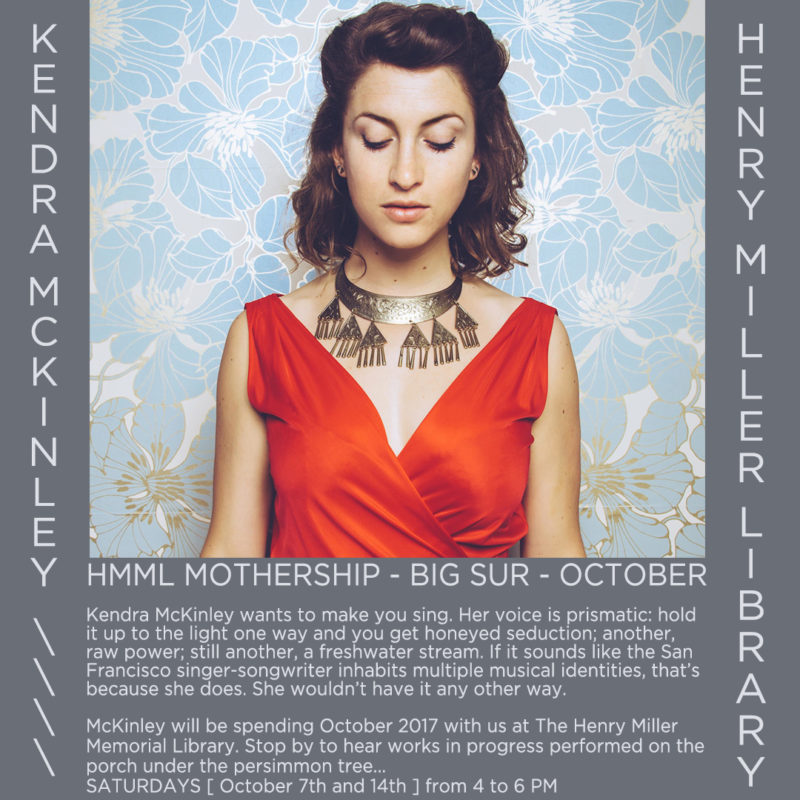



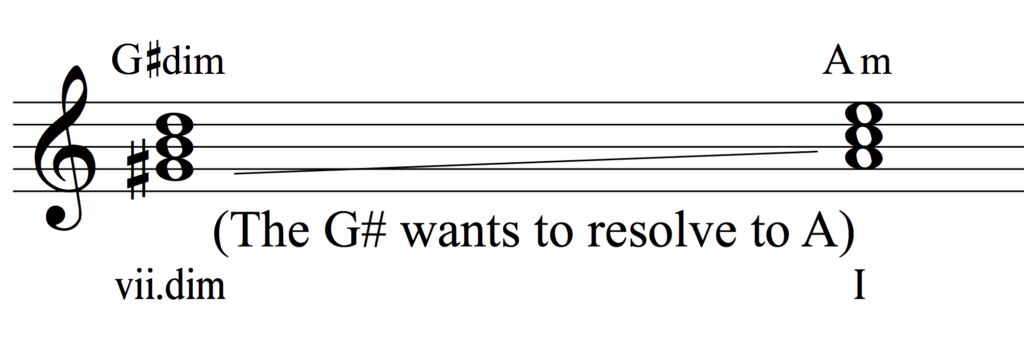 Just like the popular major chord progressions, the minor scale chord progressions want to resolve and move to the tonic or the dominant of the key. What is different is the quality of the chords.
Just like the popular major chord progressions, the minor scale chord progressions want to resolve and move to the tonic or the dominant of the key. What is different is the quality of the chords.

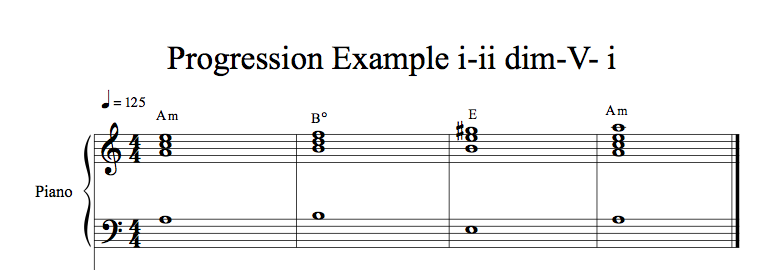
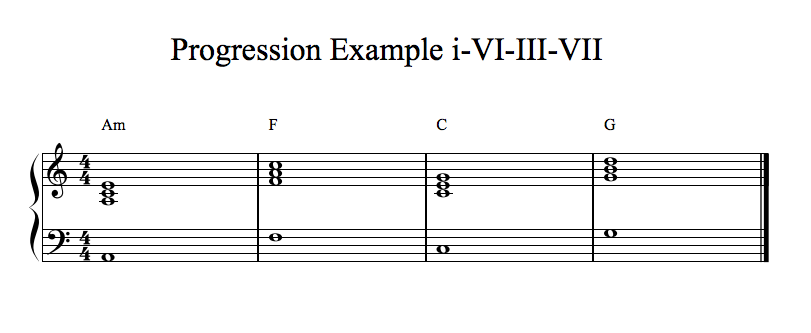
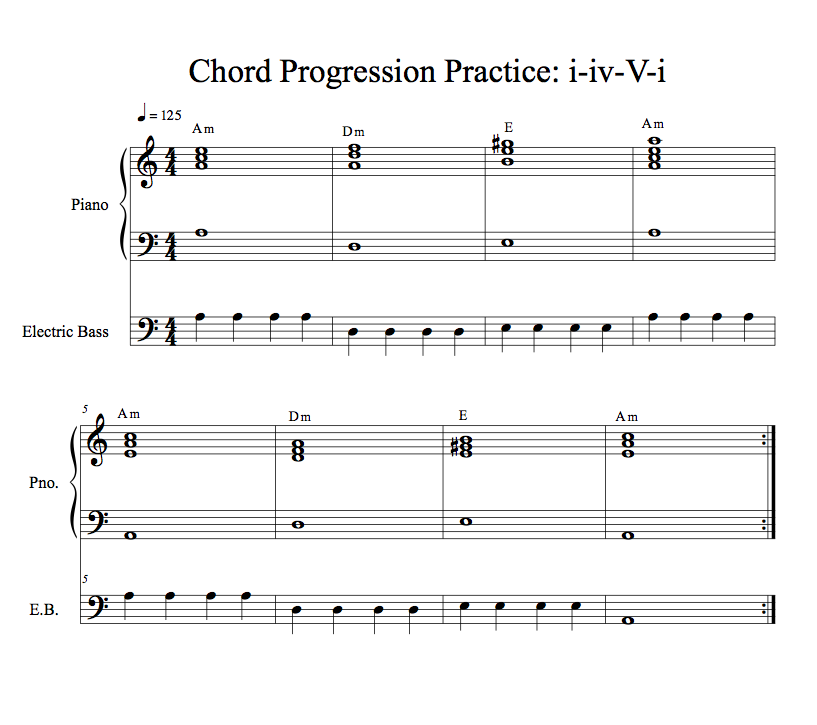
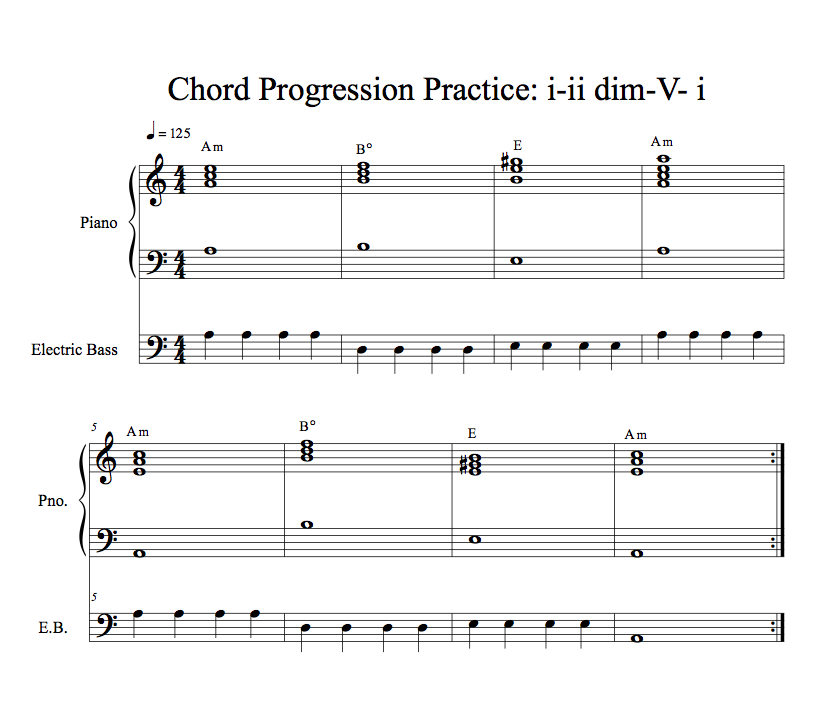
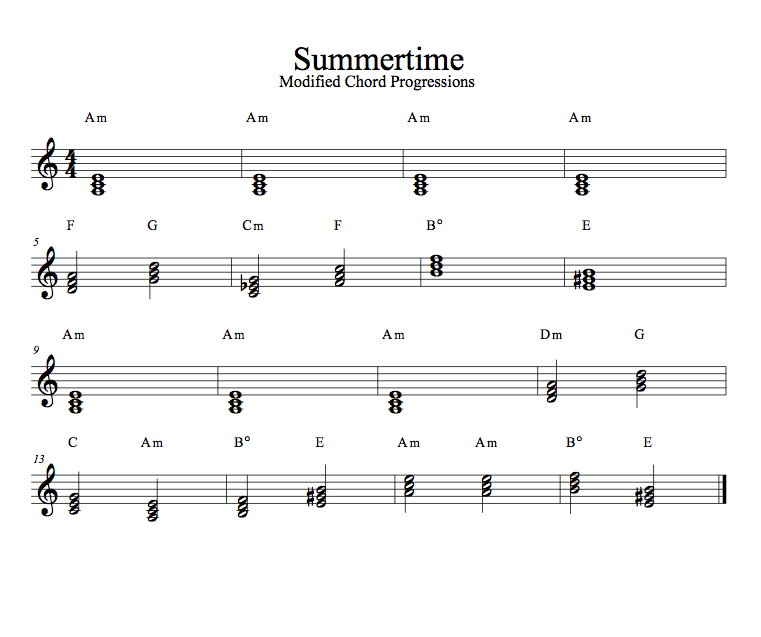
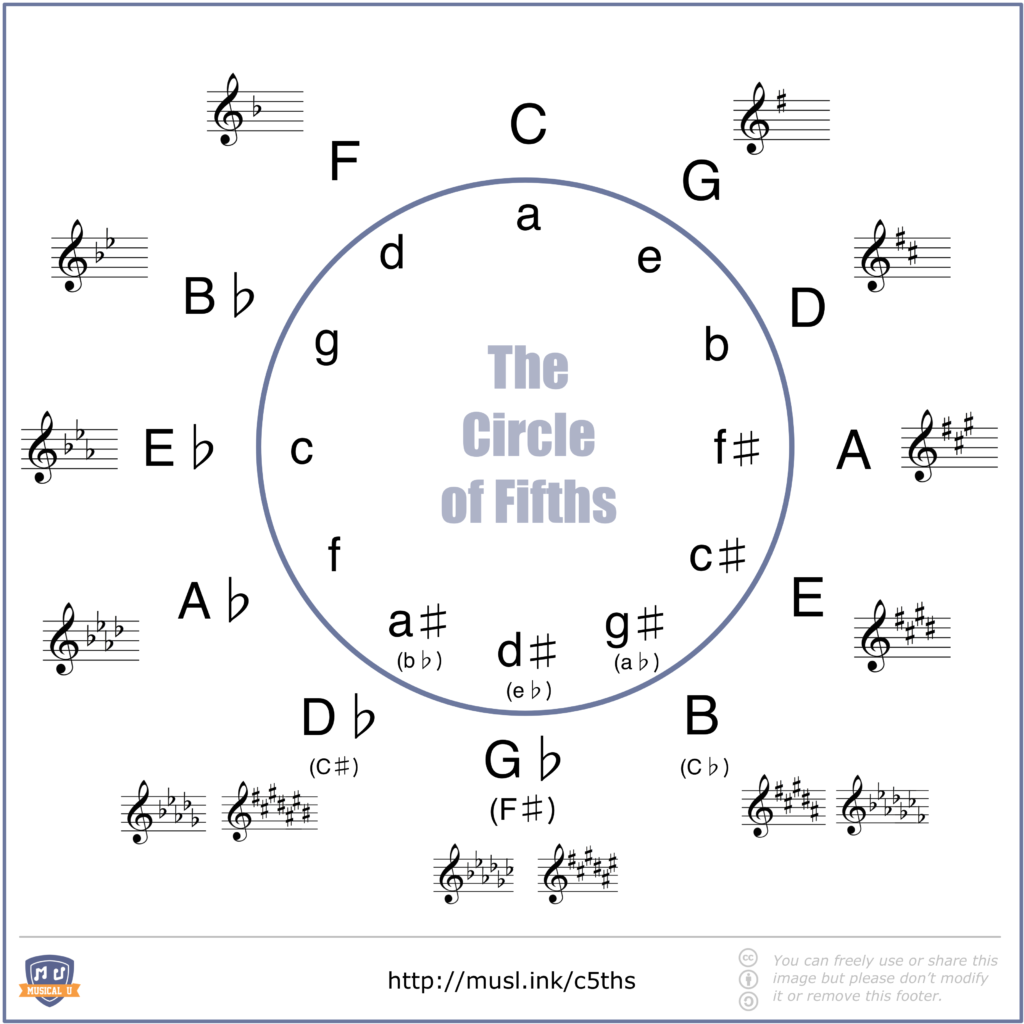
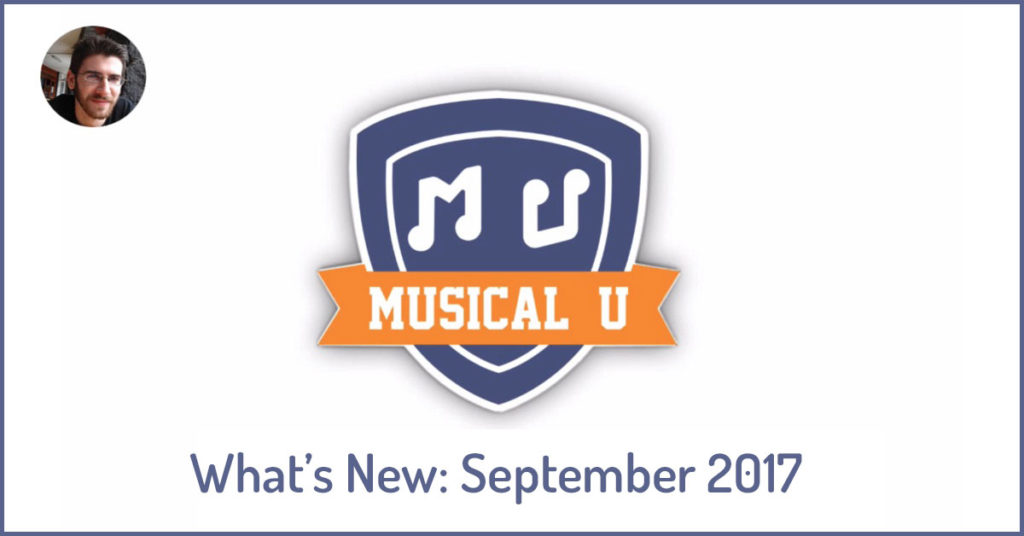
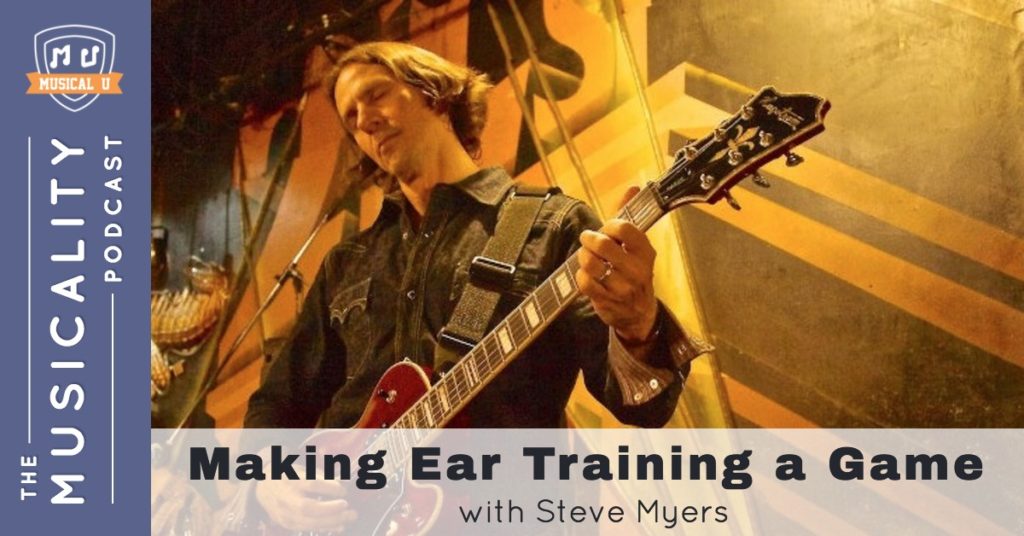
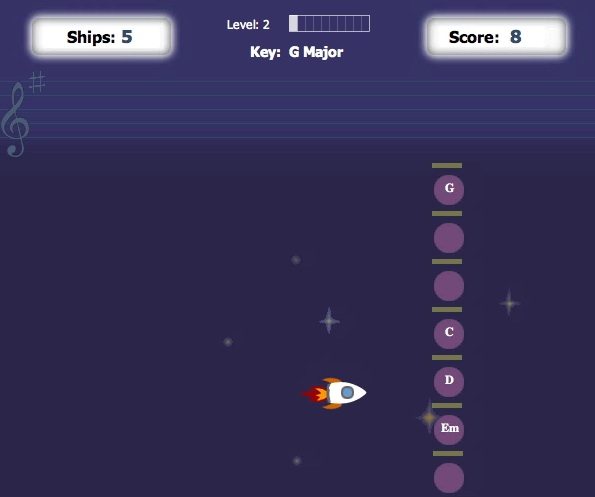 When Theta Music Trainer originally launched their online ear training games, Musical U was there to capture the moment! For a little throwback and reminiscing about that time in music education history, listen to our
When Theta Music Trainer originally launched their online ear training games, Musical U was there to capture the moment! For a little throwback and reminiscing about that time in music education history, listen to our 